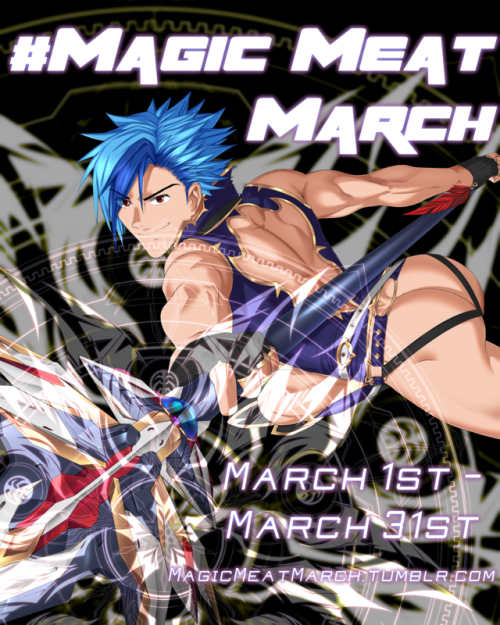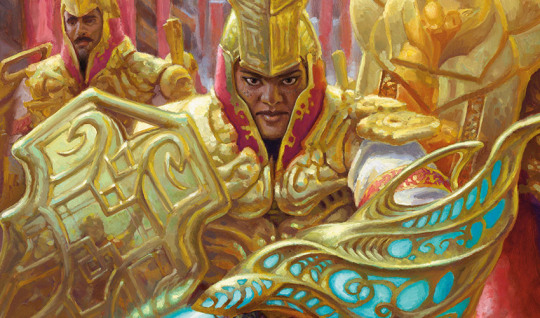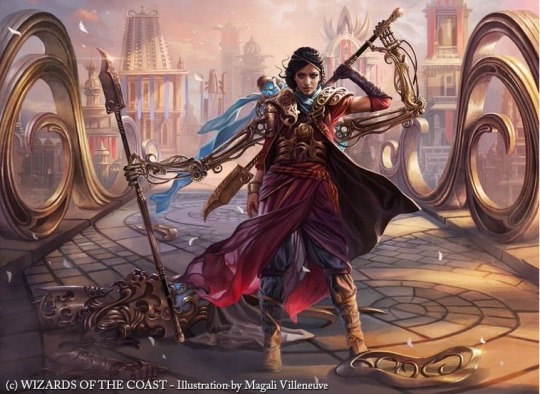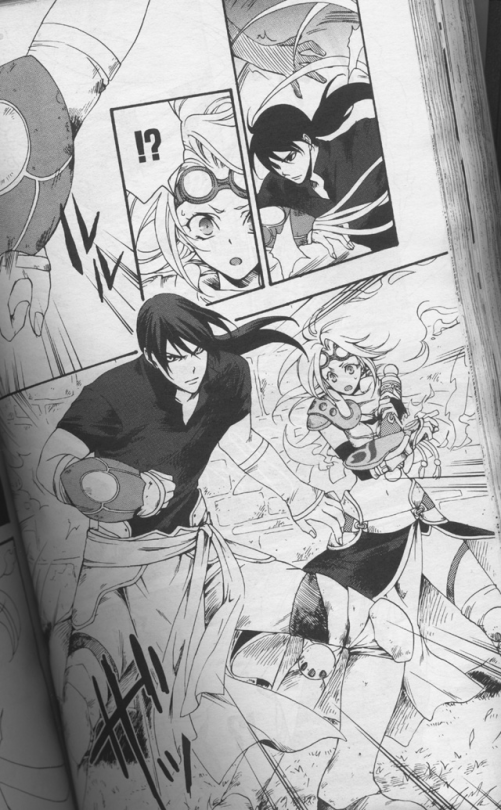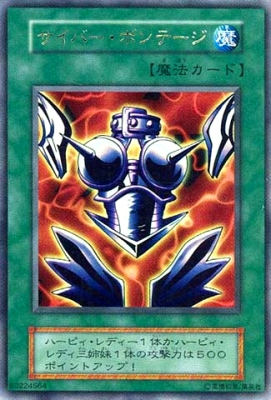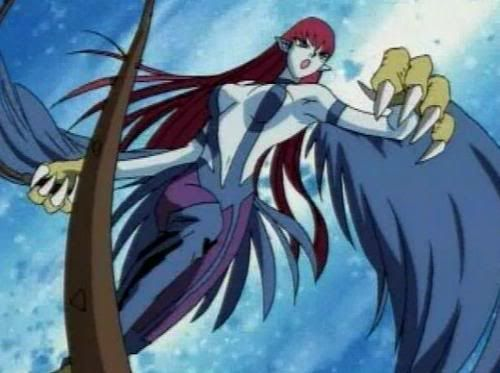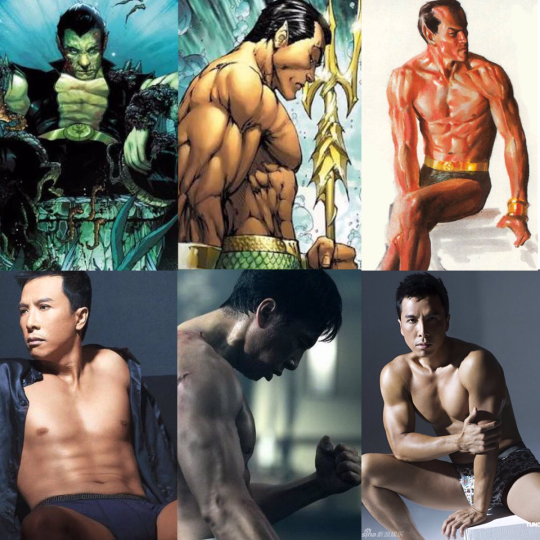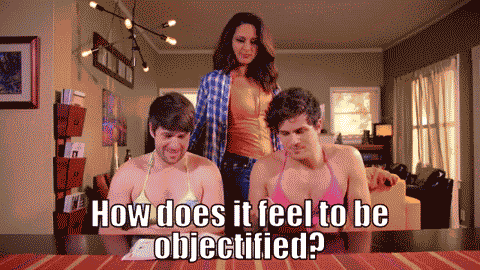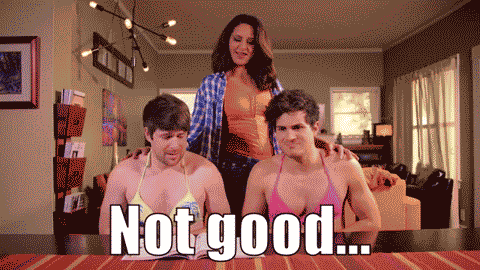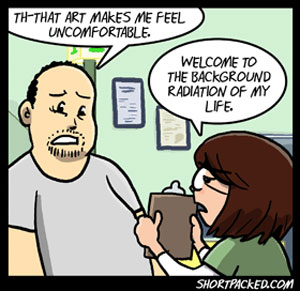queerrussetpotato:
newvagabond:
opalescentnanomachines:
So I have this theory, after hearing a lot about false equivalence coming up in discussions about female portrayal in comic books. Every time women talk about being sexually objectified, there’s always at least one dude who shows up to whine “BUT MENZ ARE OBJECTIFIED TOO, LOOK HOW UNREALISTICALLY MUSCLEY THEY ARE!” Attempting to point out the difference between a power fantasy and a sexual fantasy – to say nothing of pointing out that both fantasies are portrayed by men, for men – is typically useless. The two are firmly conflated and no amount of actual logic will penetrate.
I figure it all ties back into some of same concepts that underwrite “fake” geek girls, friendzoning, rape apology, and other things of that ilk: namely, that men think the sexual fantasy is a power fantasy.
When creating a powerful woman, men seem to have this automatic jump to making said powerful woman a sex object, because they truly think sexiness is powerful. For them, that’s what female power is: power over men. This is behind all the guys howling that sexy geek girl cosplayers are “preying” on male nerds; this is behind all the men who say women deserve rape for what they wear; this is behind all those “friendzoned” guys who insist they can’t possibly break off the “friendship” themselves because they’re helpless before the objects of their affection. It allows them to disclaim their actions as coerced, shunt away responsibility, and blame women when things don’t go as they like. They “couldn’t resist” the power of attraction.
In comics, men both don’t understand that their male power fantasies aren’t sexy for women (horrendously muscled, bodybuilder physique is NOT typically a sexual ideal), and don’t understand why women don’t derive power fantasy from the sex appeal of the female heroes. “Look,” they’re saying, “you are portrayed as powerful, and men are portrayed as sexy!” This also slots in with the idea that women are only in anything ever because of men – that their desire to attract men is one of the principal driving forces of their existence. That, therefore, the power to attract men should be important to them in a “strong” female character.
I’ve thought about this too much today and it’s goddamn depressing. It’s the same bullshit which says a woman’s only power, her only worth, is in her physical attractiveness, that women are only powerful in relation to men. I don’t really think I can safely contemplate it more right now.
Guh. Need kittens.
MOAR.
(New ILU)
Sorry to reblog myself but okay there’s more. I had to go back to work after I posted this earlier and there’s nothing to do at work but think (monotonous job is monotonous) and even though it’s depressing I couldn’t think about anything else once I got started. /storyofmylife
So inherent in all of the above is the basic concept that men are sexy because they are powerful, and women are powerful because they are sexy. This is predicated on the notion that men have power stemming from something about them as people, whereas women have power stemming from how much they deserve the attention of men. Men not only provide power to women, but they do so by losing power themselves. You guys, maybe this is why men think power is a zero sum game: because they think that women only have power when they are overpowering men with their sexy sexiness.
Fake geek girls, specifically, have an element of dominance issue to them. Look at those hot girls, swanning into fandom, taking away not only attention and material goods (limited fandom resources, such as collector’s editions and etc., has been discussed elsewhere) but also stealing their very wills from them. Better put those girls in their place, because otherwise they’ll be the ones with the power, on account of they have mammaries, and unlike those chicks in comic books they’re not safe paper-and-ink mammaries created solely to be ogled!
Also, since this is all about false equivalence, may I go on a tangent here and talk about realism? Because comics, at least American comics, portray physical dimensions/characteristics for men that are outrageous and close to impossible. Professional bodybuilders can do it but it looks freaking unnatural. No reasonable person expects all men to actually go out and try to become that. However, the way women look in comics is still the way most men, including many who consider themselves quite reasonable, expect women to look. Male superheroes are escapism for men, so they can be as unrealistic as they need to be; female superheroes are also escapism for men, so there’s a limit on how unrealistic they can be. Although niches exist for all kinds of physical-dimension fetishes, women in comics are idealizations of what the men reading/writing those comics would want to have sex with, and so they’re kept pretty close to society’s ideal beauty standards (which, while unrealistic also, are not considered to be such by most men). Let me put it this way: a drawing of a crowded street in which you replace all the men with bodybuilders would look bizarre and ridiculous; a drawing of a crowded street in which you replace all the women with models or even well-dressed porn stars wouldn’t make most people bat an eye, except maybe to wonder what city it is or to make appreciative comments. Women are supposed to look like that, says society. Not just a few, exceptional women – all women, at least if they want to be worth anything.
The above paragraph exists to punctuate this point: when women complain about how they’re drawn in comics, it’s not about realism. The body dimensions of male superheroes are metaphorical representations of their power over whatever they’re up against, whereas the body dimensions of female superheroes are meant to be literal depictions of their power over men.
IDK. This post has wiped me out today and I think I’m done with saddening feminist musings for a little while. Still need kittens and now possibly also schnapps.
Can’t believe I discovered this post just now. It was literally written before I started this blog!
What a nice writeup on false equivalence! Puts the subject of power politics in portrayals of gender we discussed here more eloquently than I ever managed. Possibly my favorite part is:
“So inherent in all of the above is the basic concept that men are sexy because they are powerful, and women are powerful because they are sexy. This is predicated on the notion that men have power stemming from something about them as people, whereas women have power stemming from how much they deserve the attention of men.”
~Ozzie
ht: @snarktheater
more about false equivalence on BABD
